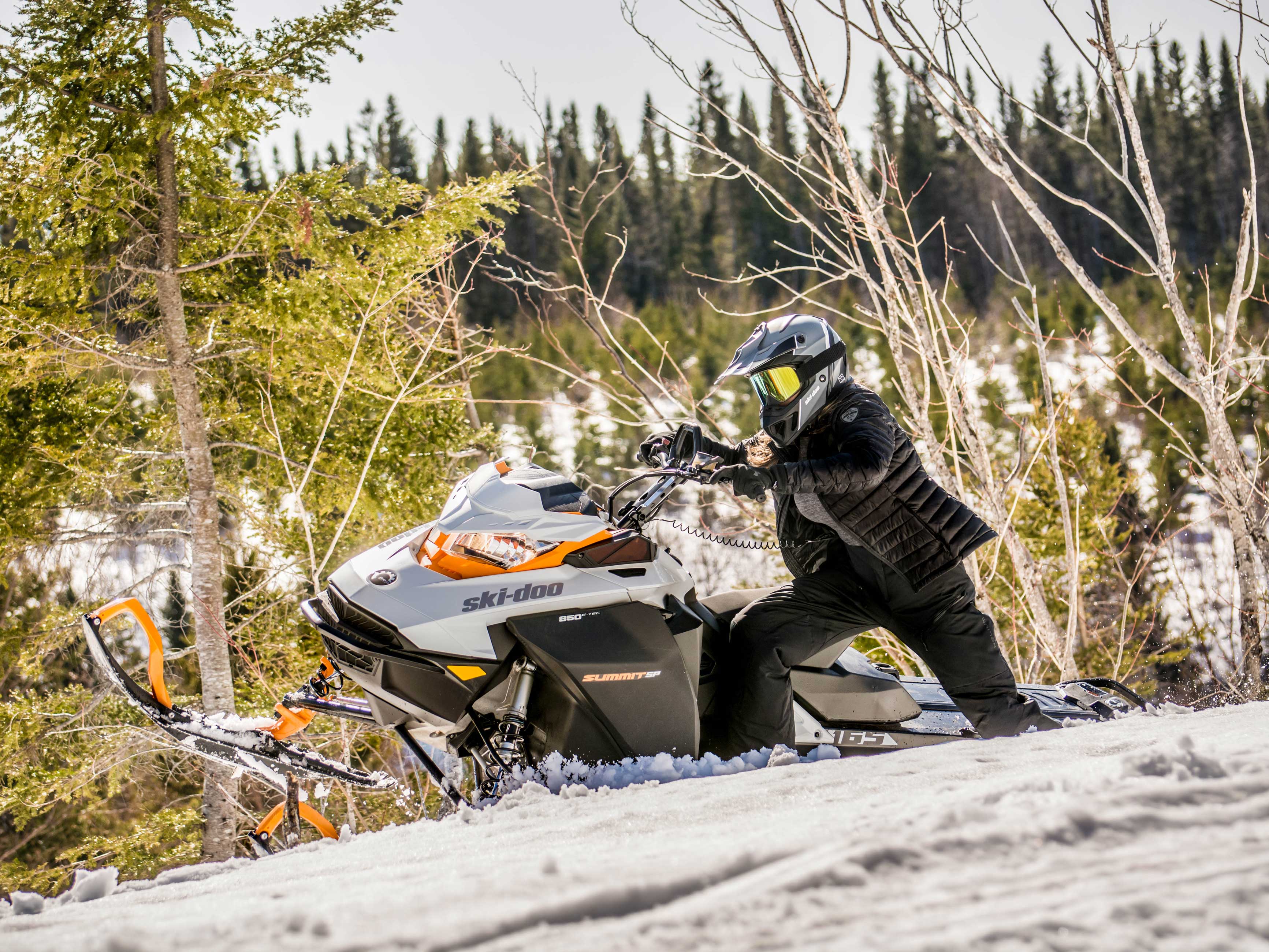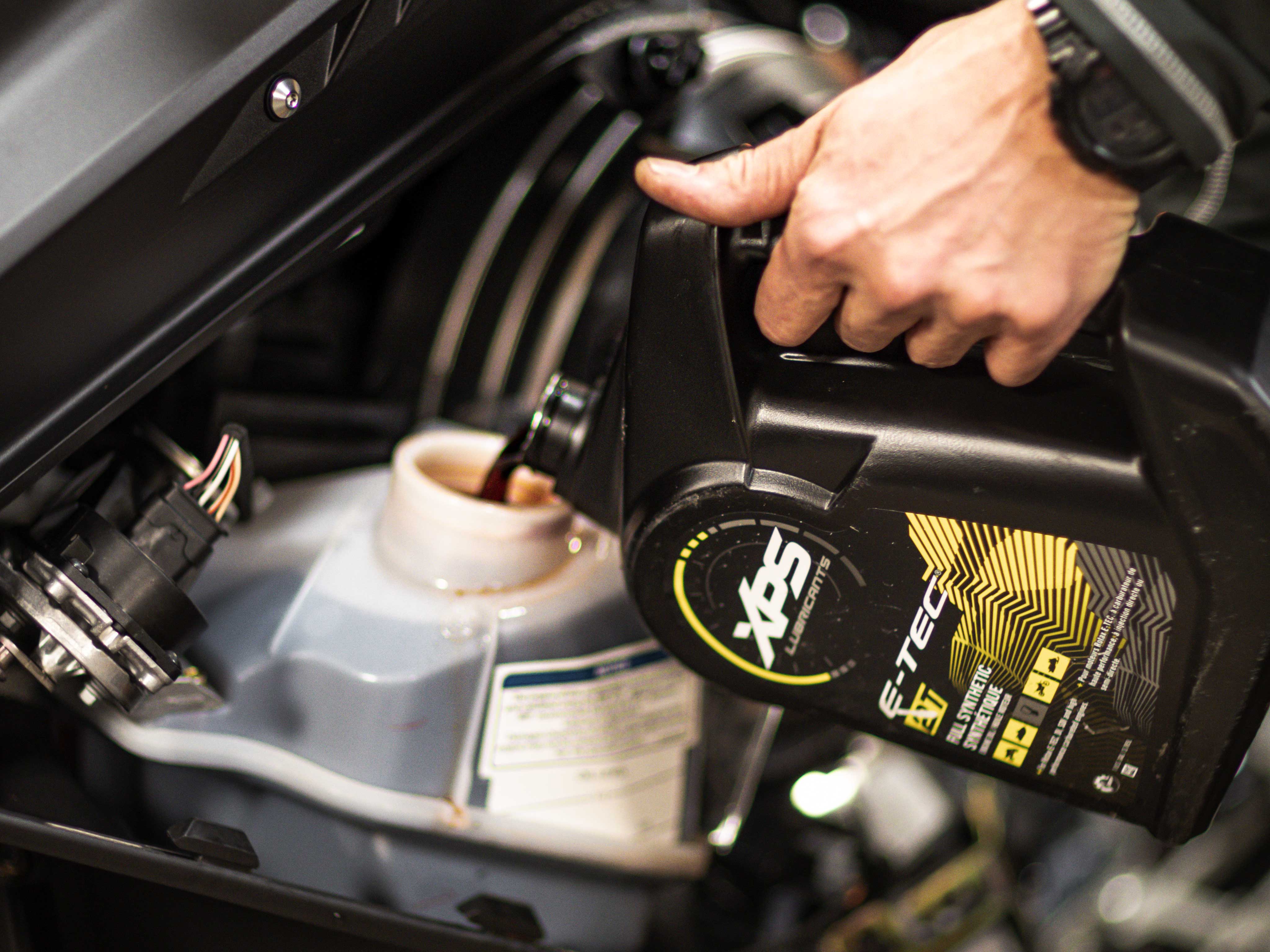1997 – Initial Ski-Doo REV Platform Design Phase
“It was the start of modern snowmobiling,” Carl Kuster, Ski-Doo Ambassador and former Snocross racer.
The concept of the original REV came from within the walls of BRP (Bombardier at that time), but it was not a corporate mandate to develop a machine that would revolutionize the industry. Two young engineers, Bruno Girouard and Berthold Fecteau, took it upon themselves to begin developing a concept they felt could make riding a snowmobile easier for the rider. But there were challenges and detractors along the way.
Girouard had never rode a snowmobile before, but after his first rides and watching riders on their sleds, his first inclination was that the rider positioning on a traditional snowmobile was all wrong – especially through the bumps. The rider had very little influence over the sled behavior because of the way the weight was so poorly distributed.
While Girouard’s concept made sense to the pair in theory, it would be up Berthold who took that concept to the design phase and brought something tangible from the drawing board into the prototype phase.
The reaction at this radical new concept from their colleagues at Ski-Doo? Not great. In fact, many were against moving forward because they didn’t fully understand the benefits that could be realized.
“Was I expecting it to be something fully different that the market would say, ‘We want to ride it,’?” said Pascal Vincent, Director Global Product Ski-Doo. “Not at the beginning, let’s be honest. But over time, when you get to understand what’s behind it… there was something there,” he added.
2003 – The REV was Realized
Eventually the doubts eroded into belief and the REV project was catapulted into full development mode. Prototype after prototype were built, analyzed, tested, tweaked and rebuilt again until finally the Ski-Doo product team had achieved the most monumental advancement in the industry.
The two primary factors of the original REV design that produced this paradigm shift were the pyramidal frame concept and moving the rider further forward on the machine.
The pyramidal frame instantly made the REV snowmobile five times more rigid than any other sled without increasing weight. That consistency in chassis dynamics made calibrating the rest of the vehicle much easier.
The rider-forward positioning was based on the Girouard’s belief that moving a rider’s feet under their body would make standing up easier to better absorb the bumps and put the rider in a position of greater leverage over the sled.
The entire rider position shift amounted to moving a rider’s mass 12 inches forward and one inch higher. Tangible results were instantaneous. Riders such as Blair Morgan – who began using a stand-up riding style before the REV – immediately became nearly unbeatable on the track, thanks to this new riding position.
“When you got Blair on the REV it was almost a match made in Heaven. Look at how dominating he was… you’d almost believe the two were made for each other. He was that good,” Kevin Beilke, Editor of Snow Tech Magazine, said.
Those 13 combined inches launched the Ski-Doo brand lightyears ahead of the competition, and into the industry leadership position the brand still maintains today. But the REVolution was just getting started.
2008 – Introduction of the REV XP Platform
Having a target on your back is never easy, and Ski-Doo product development team knew the competition had their sights firmly fixed on the REV. Sitting still was not an option. As others quickly shifted to their own interpretation of this new rider-forward position, the Ski-Doo team was already at work evolving the REV platform.
In 2008, the REV XP platform was announced and with it came an astonishing 50 lb. weight reduction and improved rider ergonomics. The driven pulley was moved forward and up allowing riders even more freedom of movement to influence the snowmobile.
Weight loss was the biggest news and caused another change in the way snowmobiles were built. The MXZ TNT 600 was the first liquid-cooled sled marketed at under 400 lb. And it moved overall sled weight up the priority list of all manufacturers as consumers quickly realized the benefits of lightweight handling.
The REV XP platform was also the first chassis that housed several other industry-defining Ski-Doo innovations including: Rotax E-TEC direct injection engines and the rMotion rear suspension. Along with the next generations of the REV platform, both continue to be hallmarks of Ski-Doo snowmobiles that continue to set the standard in snowmobiling and have done so for more than a decade.
2013 – The REV XS and XM Mark a Turning Point in Snowmobile Design
The REV XS platform unveiled for model year 2013 was as much a cosmetic refinement as it was a further step in advancing rider ergonomics. Obvious to the naked eye were changes to the hood, side panels, headlights, taillight and snow flap. Each feature purpose-built to create a better trail riding experience.
2013 was also an important demarcation point in Ski-Doo history for deep-snow snowmobiles. It was the first year of the REV XM platform, a deviation from simply stretching a trail platform to fit longer tracks, as had been the industry norm. Along with this new XM platform came the tMotion deep-snow specific rear suspension.
This recognition that deep-snow and trail snowmobiles needed their own platforms with individual features to better suit the evolving needs of riders in each market segment set in motion further chassis developments that would again send Ski-Doo further ahead of the pack.
2017 – The REV Gen4 Redefines the Riding Experience
Almost immediately after the launch of the REV XS and XM platforms, the Ski-Doo product team got to work on another industry-changing innovation. The internal code name of this next snowmobile evolution was, project “ICE,” which stood for Incredible Customer Experience.
Engineers and designers were given a blank sheet of paper and permission to reinvent the snowmobile from the snow up. The results once again sent shockwaves through the entire industry as they integrated engine and chassis design to eliminate compromises established by using components developed separately. Just as the original REV platform had done nearly 15 years prior, every inch of the Ski-Doo REV Gen4 platform redefined the relationship between rider and machine.
The mass of the REV Gen4 was further centralized front to back, but this time mainly in the left to right orientation, creating a perfectly balanced snowmobile that instantly responded to the slightest rider input. “The sled reacts almost telepathically,” Snow Tech Magazine wrote in their initial review of the REV Gen4.
Indeed, every detail from the narrow front of the seat to the much-scrutinized open toe holds were intentionally designed so riders could choose how connected they wanted the ride to be. It also allowed them to refine ergonomics to their own liking.
The new REV Gen4 platform was also accompanied by a game changing new power plant: The Rotax 850 E-TEC engine introduced new technologies that increased performance and reliability and instantly put the rest of the industry back into catch up mode. It also enabled what would become one of a deep snow riders favorite features – SHOT starting. The benefits of electric start without the extra weight. And leaving no stone unturned, the frictionless pDrive clutch was introduced to create even better throttle response.
And the most discerning minds in the industry speculated the layout of this new platform and the reconfiguring of the entire engine package would enable the Ski-Doo development team to take snowmobiling to places it had never been before. In 2020, that speculation came to fruition with the announcement of the late-release 2020 Ski-Doo Summit 850 E-TEC Turbo – the world’s first factory-produced 2-stroke turbocharged engine. The game was officially changed yet again.
2023 – REV Gen5 Creates a New Level of Refinement
Twenty years goes by in a flash. That Incredible Customer Experience the REV Gen4 platform brought to life has been taken to the next level in 2023 with the REV Gen5 platform. It takes what is loved from the previous platform and makes it even better.
While many of the changes from Gen4 to Gen5 trail sleds are visual – freshly sculpted side panels slimmed for better rider sight lines, LED headlights and an available 10.25-inch color touchscreen display – it’s what you feel and hear where riders truly appreciate the engineering effort that went into this latest REV edition.
The ride is extraordinarily quiet and calm as the vibration, noise and harshness riders had grown so accustomed to is virtually eliminated. A fourth engine mount stabilized the engine in the chassis to eliminate movement within the drive system. The result is extended belt life so riders can spend more time on the snow. The suspension geometry has been further refined for insanely smooth and predictable handling.
The REV Gen5 deep-snow platform continued the transformation with more segment-specific design. Being early three inches narrower makes it easier to lean further into sidehills and squeeze through technical tree lines. A new tunnel design further reduces weight and houses a completely redesigned tMotion rear suspension with new mounting locations. New suspension geometry noticeably improves handling while a revised CVT cooling system extends belt life.
And 20 years later, it’s obvious this latest REV Gen5 platform is not the end. If the continued success of the REV snowmobile platform and its various generations can teach anything, it’s that Ski-Doo innovation never stops. By proving there was a better way to build a snowmobile, it has allowed BRP development teams to create other paradigm shifts across the powersports industry. Examples include Can-Am Spyder and Ryker 3-wheeled vehicles and the Sea-Doo Spark personal watercraft and Switch pontoon boats.
While the Ski-Doo REV Gen5 platform is the latest advancement in snowmobile platforms and technology, it’s only a steppingstone towards the next remarkable, industry-shaping innovation.


